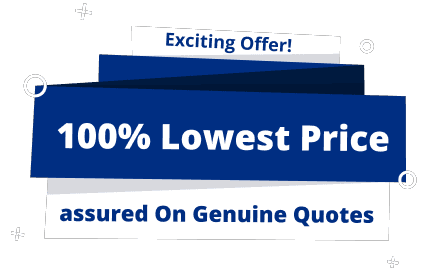Recent Posts
- Which Kind Of Company Will Be Good..
- Which Kind Of Company Will Be Good..
- Which Kind of Company Will be Good..
- Why India is Ideal for Digital Mar..
- 10 Best Countries to Work For Digi..
- Which Kind Of Company Will Be Good..
- 11 Best Countries To Work For Java..
- The Demand For Java Developers In ..
- Best Countries To Work For Web Des..
- Best Countries To Work For SEO Pro..
Are you planning to get on board on a journey of business agility within the Scaled Agile Framework? This is a strategic leap toward fostering resilience, innovation and adaptability. You can do this in your dynamic business landscape. You can gain more knowledge on business agility in SAFe from this content:
Business Agility – A Basic Understanding
Business agility is nothing but the ability of a business to respond to emerging changes in the market and opportunities. The business can do this with the help of innovative solutions. With business agility, businesses can stay competitive.
This becomes possible by demanding everyone in the organization to responsibly deliver solutions. This is important to adopt particular practices and principles. In turn, the business can provide solution-driven and high-quality services and products. Above all, the business can do this at a faster pace as compared to its competitors.
Software organizations or software departments were the first to use the concept of agility. They did this as they used techniques like Feature Driven Development, Lean and Scrum to name a few. They relied on this concept to create valuable solutions at a faster pace. The present world has turned digital. So, every team within an organization including the software development team should work at an equally faster pace. Only then, together they can deliver the right solution. This is where the Scaled Agile Framework can help.
What is Business Agility in SAFe?
You should know what is business agility SAFe. This knowledge is important before you delve into more details about business agility in the SAFe. When it comes to the Scaled Agile Framework, business agility denotes the ability of an organization. It means that the organization should be capable enough to effectively and quickly respond to market changes. Also, the organization should respond quickly to competitive pressures and the needs of customers.
It is all about instilling an adaptive and dynamic business atmosphere. In turn, there will be a setup in the organization that can thrive during rapid changes and uncertainties. Scaled Agile Framework focuses on the principles of Agile and Lean Methodologies at scale. In turn, organizations can achieve business agility. They can do this by implementing the key aspects mentioned below:
1. Organizational Learning
Scaled Agile Framework motivates a learning culture within the organization. Teams gain the power to adapt their approaches, learn from failures and experiment. In turn, they can deliver better results.
2. Very Fast Feedback Loop
Business Agility in the Scaled Agile Framework depends on establishing very fast feedback loops. The feedback can be from different sources like team members, stakeholders and customers. Also, the framework suggests that feedback should be obtained early. Only then, it will help with ongoing improvement.
3. Customer-Centricity
SAFe always insists on a customer-centric approach. It motivates organizations to pay attention to delivering value to customers. This should happen not only quickly but also consistently. For guiding developmental efforts, organizations should get feedback from customers.
4. Lean Thinking and Leadership
To foster a culture of ongoing improvement and innovation, Lean-Agile leadership is important. Forerunners in SAFe organizations are expected to illustrate lean thinking. They are also expected to back the principles of business agility.
5. Inspection and Adaption
The key aspect of SAFe is “inspect and adapt”. Regular reviews will help achieve ongoing improvement. In turn, organizations can learn from experience. Also, they can make the appropriate adjustments.
6. Adaptive Planning and Execution
Scaled Agile Framework focuses on adaptive planning and execution. You should plan things flexibly. Also, your plan should be responsive to change. In turn, your organization can adjust its strategies based on the evolving market conditions and feedback.
7. Lean Portfolio Management
In Business Agility in SAFe, lean portfolio is a crucial part. It helps your organization to prioritize and financing value streams. By doing this, your organization can ensure that its strategic objectives go in line with the work execution.
8. Agile Teams and Value Streams
Businesses functioning under SAFe work into ARTs and value streams. The teams that follow Agile work in conjunction with each other. They do this within Agile Release Trains. They are aligned with value streams. As a result, different teams within your organization can deliver value in a coordinated and synced manner.
9. Cross-Functional Collaboration
According to Scaled Agile Framework there should be cross-functional collaboration among teams and departments. As a result, there will be better communication. The probability of silos will reduce. Further, it can foster a culture of shared responsibility.
10. Lean-Agile Principles
In SAFe, business agility is rooted in Lean and Agile principles. Together they will promote ongoing improvement. Also, they will promote efficiency and the ability to respond to customer feedback rapidly.
With these practices and principles, the Scaled Agile Framework offers a comprehensive framework. Organizations can use it to achieve business agility. The objective is to create an atmosphere, in which teams can respond rapidly to changing market conditions. By doing this, they can ensure long-term success for the organization. This is important in the dynamic and highly competitive business landscape.
Why Do Organizations Struggle To Achieve Business Agility?
During the 20th century, organizations were focusing much on efficiency and dependability. They rarely thought about speed and agility. In the present day, many owners of traditional businesses know about the digital disruption threat. However, many of them fail to adopt business agility. So, they face hardships in finding their place in the next economy. Why do organizations fail to achieve business agility? Here are some reasons:
1. Businesses Begin a Quick Adaptive Network
In general, successful organizations do not begin processes cumbersome and large. Rather, they start as an adaptive network of motivated individuals. They are fast-moving and focused on responding the fresh business opportunities and customers. They keep their reporting relationships and roles fluid. They associate organically for spotting the needs of customers. Also, they explore potential solutions and deliver value in any way possible. In other words, it is an adaptive network of people jointly working to leverage an opportunity.
2. Hierarchy Forms and Then Grows Slowly
Let us consider that an organization succeeds. It will naturally intend to expand on its success to grow further. When this growth happens the responsibilities of individuals should get a clear picture. The outcome is that the enterprise hires specialists to add expertise and create fresh functional areas.
Procedures and policies make sure of legal compliance. Also, they drive cost-effective and repeatable functions. The business begins to organize functionally to scale. In turn, silos generate. At the same time, the network continues to look for fresh chances and deliver value. This happens parallely. When the business achieves larger economies of scale, it needs the hierarchy to grow. When this growth happens, it develops a conflict with the entrepreneurial networks.
3. Collision of Adaptive Network and Hierarchy
With a quick-moving and adaptive network, the hierarchy eventually collides. The outcome is that the adaptive network gets crushed. One of the main casualties here is the focus on the customers.
With the non-existence of entrepreneurial network, the organization begins to lack the quickness. So, they cannot quickly respond when customers look for a dramatic shift. This happens particularly when a competitor or a disruptive technology comes up. Due to this, a crisis comes up and the very survival of the company is at risk now.
Nevertheless, the hierarchies that organizations built over the past few decades offer policies, practices and structures that are time-tested. They back the hiring, retention and growth of thousands of employees from across the world. In other words, those time-tested procedures and policies are still required.
To address this dilemma, businesses need not have to trash what they already know. They need not have to start over. Rather, they can reintroduce a more network-like Agile structure. It will work in conjunction with the hierarchy to create a dual operating system. With this system, businesses can take advantage of strategic disputes and can retain their constancy.
How does SAFe Help with Business Agility?
The Scaled Agile Framework leverages the principles, values and philosophy of Agile. Together with Agile, this framework depends on Lean product development and system thinking. This will help businesses not only to develop but also to deliver the best-in-class solutions. These solutions are built upon the latest technology. Also, they can ensure quick turn-around time besides maintaining the quality of their work.
SAFe 6 for Lean Organizations is a bible of integrated and proven competencies, practices and principles. They help businesses achieve agility. They do this by implementing Agile, Lean and DevOps at scale.
What is Business Agility in SAFe 6.0?
You have an idea of business agility. But you should know what is business agility in SAFe 6.0. it is nothing but the ability of a business to compete and thrive in the digital age. The business should be in a position to swiftly respond to emerging opportunities and market changes. It should do this with digitally-enabled and innovative solutions. In the present world, everything moves so quickly. To respond to customer needs and to stay competitive, businesses should achieve business agility with the Scaled Agile Framework.
Want to Level Up Your Skills?
LearnNThrive is a global training and placement provider helping the graduates to pick the best technology trainings and certification programs.
Have queries? Get In touch!


Comments
Previous User comments